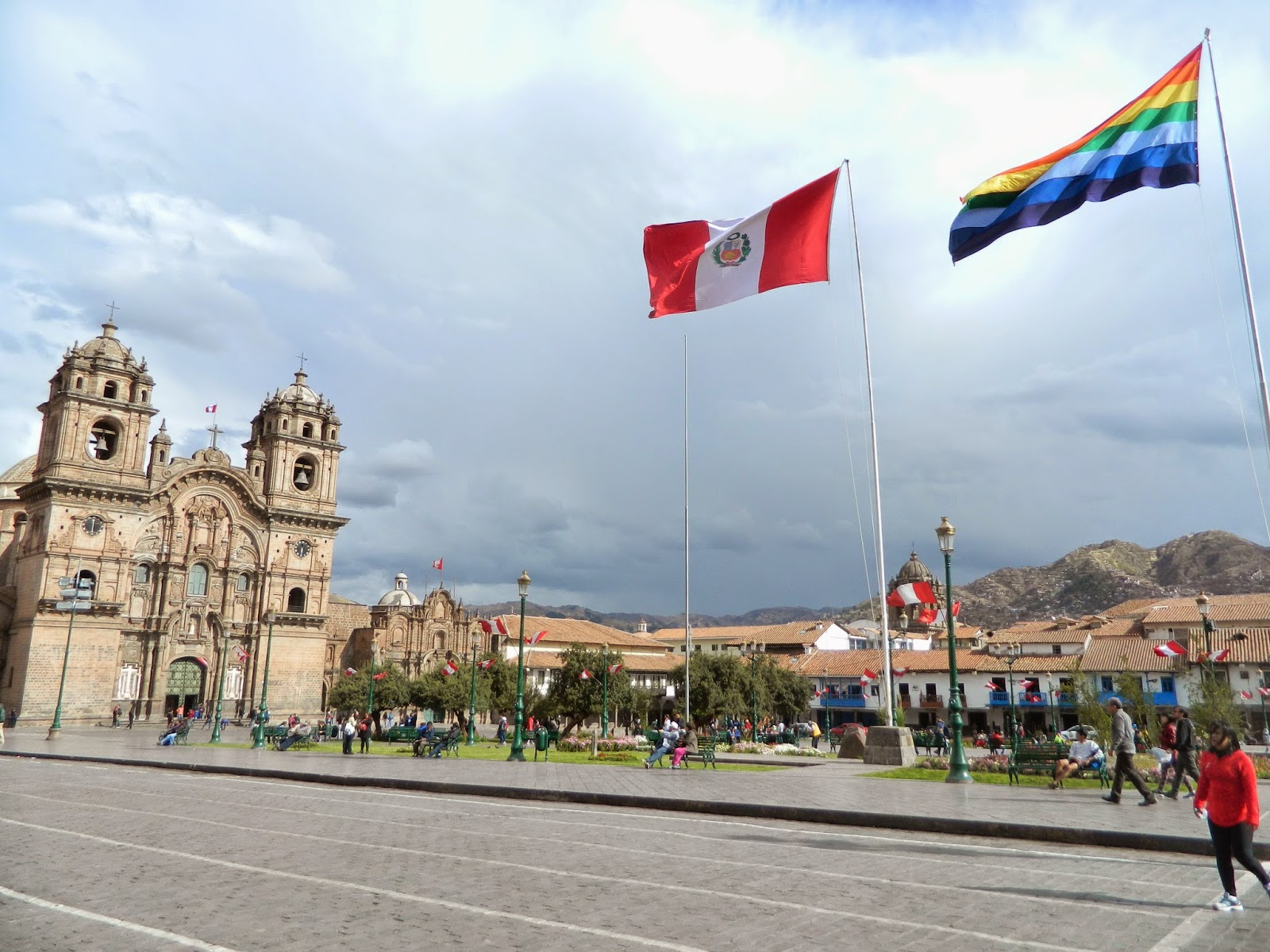
Cusco, what I call the Big C, is a haven of indigenous culture injected into a metropolitan setting in the south of Peru. Cusco has many spelling, but certain names have different meanings. Cusco with a “s” is the most recognized, Cuzco with a “z” I have been told by my teacher is an offensive term, and Qosqo is the traditional Quechua spelling. As a result, Qosqo is pronounced slightly differently than the formers. In this post, I will be using the spellings of Cusco and Qosqo interchangeably. Pampachaykuway! (Sorry!)
The first thing that stuck out for me about Qosqo is how monochromatic it is. All the buildings look vaguely similar, and it lacks large skyscrapers unlike the casino ridden capital of Lima. It is a brown city. The air is a mixture of dusty but fresh as a result of being in the mountains. It is an unusual juxtaposition.To get to Cusco from the Sacred Valley, you need to take buses or taxis.
Buses only cost 3-5 Soles while private taxis can be much more expensive. If you are traveling from Calca or Pisac to Qosqo, it will be easy to find these buses/vans. People will be shouting the city’s names. In order to get back to the villages, simply hail a taxi, and ask to be taken to Calle Puputi (belly button in Quechua). The same buses can take you back to the Valley. Taxis are the main way to travel in Qosqo if you are a tourist. Buses can be crowded, and theft is more frequently committed on them.
The main square of course is the Plaza de Armas. It is heavily filled with tourist buses, and is littered with people from all over the world. You are just as likely to here English, French, German, or Danish in the streets as opposed to Spanish.
Many tourists, if not already mentioned before, are Peruvians as well. Cusco is a cultural center, starting point for the fabled Machu Picchu and Sacred Valley tours. Everyone wants to come here!
The plaza is where you can buy your Perurail ticket, drink some Starbucks, or even get fast food at McDonald’s or Kentucky Fried Chicken. You need to watch your step. Many people will ask for money, try to sell you goods, or draw you into expensive stores. Pick pocketing is also a concern, but it has not been an issue with me or my companions so far. There are two churches here. The most famous arguably is the Catedral Basilica. It has the most detailed masonry and is located in the center of the plaza.
Other sites in Qosqo include The Market at San Pedro. It is mixture of touristy and residential shopping. Fortune tellers and food vendors are on the fringes of this covered jumble of stalls. Qosqo is simply nice to walk around. Careful where you step though; dogs poop anywhere and everywhere.
Much of Qosqo looks very similar, but you can find great hole in the wall pubs, cafés, and shops within the city. The trick is finding the same place again! Remember to avoid the main squares for cheaper prices of course.Personally, my favorite aspect of Qosqo is the Quechua. This should not be surprising for me though. Quechua is street names, buildings, and in people’s own speech. I get to practice some quick vocabulary and see a culture, some consider fading, to be vibrant and in action.
I am going to Machu Picchu this Saturday. It will definitely be an adventure. No guide, early morning wake up, and we have to take a taxi from a train station back to Pisaq after. I’m excited. Quechua is slowly progressing. I am always awaiting my teacher’s call. Everyone in Pisaq is getting ready for the festival too. More to come about all of these exciting events and endeavors!